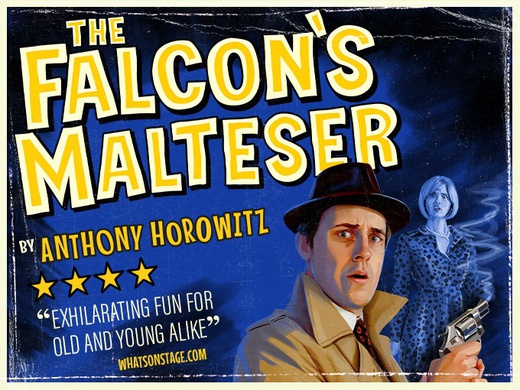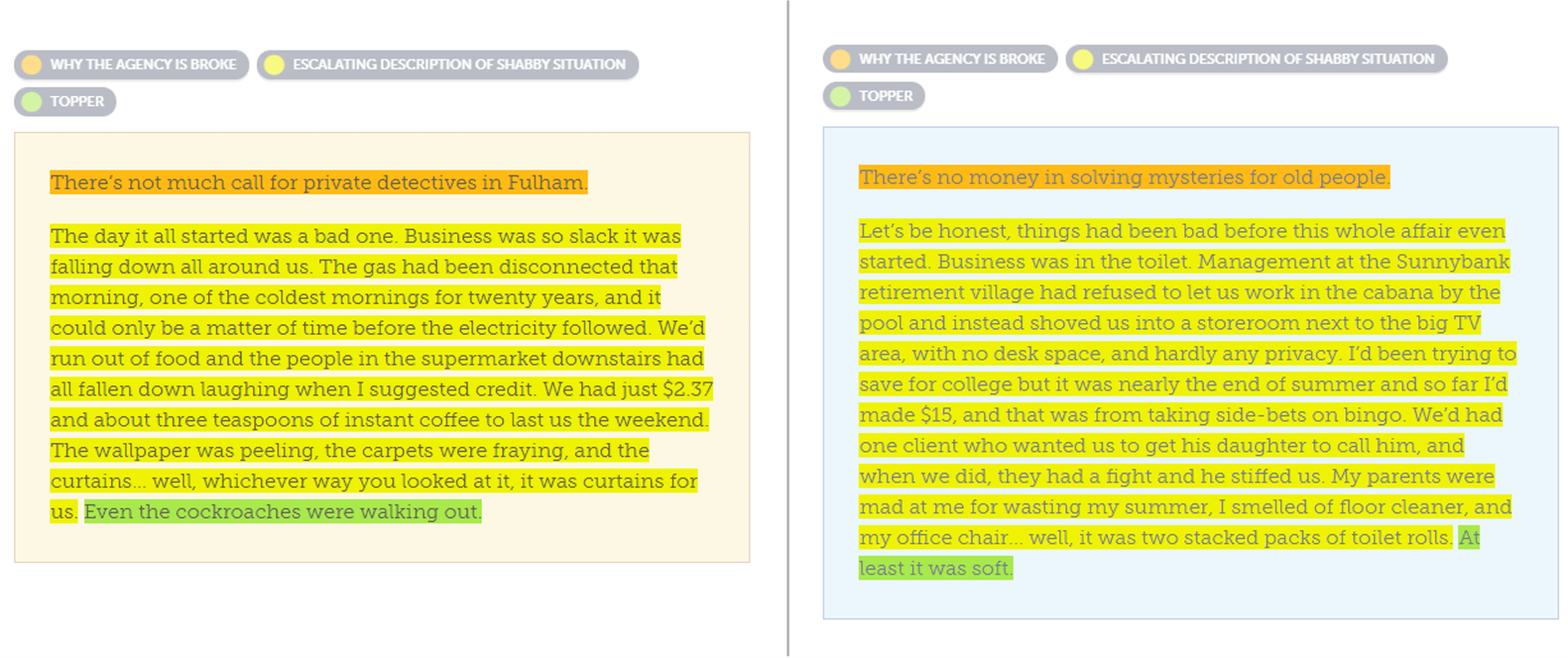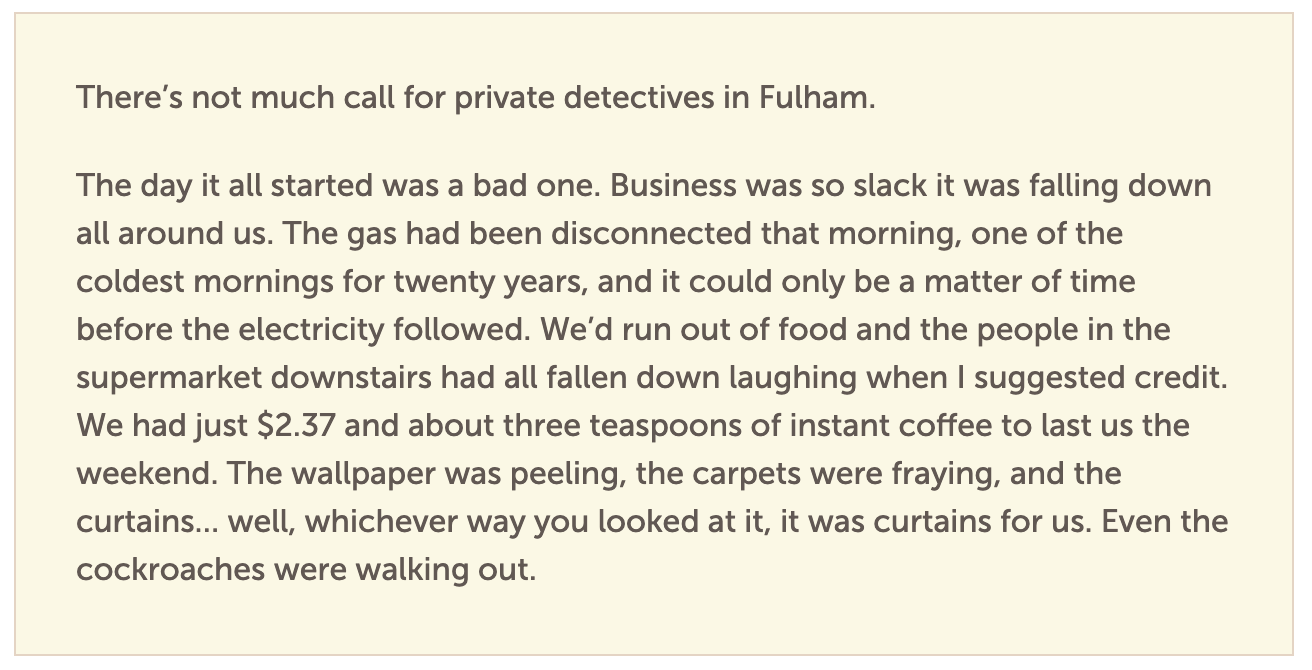We've added a new course to our Middle Years narrative writing collection.
Detective comedy with The Falcon's Malteser uses a longer narrative sequence to teach students about mixing genre tropes and styles.
The course includes five lessons that feature snippets from The Falcon's Malteser, the first book in Anthony Horowitz's much-loved Diamond Brothers series:
- Setting up the shabby detective
- Introducing the client
- Getting the job
- Some action!
- Reflecting on the job
Students who work through this course will hit all the key moments to set up a humourous detective story, but will not fill out a complete chapter.
What narrative text features do we cover?
These lessons examine narrative control and pacing, with an overarching focus on the elements and stylistic choices that allow for an effective genre crossover between detective story and comedy.
The Falcon's Malteser is a humourous parody of the 'shabby detective' mystery/action genre, and is an artful example of combining genres that's accessible to middle years and older students.
The opening chapter (and the rest of the book) hits all the classic beats of a detective mystery, but exaggerates the tropes to the point of absurdity—making it a fun comedy as well.
Each lesson focuses on a particular detective story trope, learning how to reimagine them with a humourous (rather than grim and dramatic) tone. Throughout the course, students are encouraged to plan ahead so that they can effectively control the release of information.
These lessons follow a linear sequence to build a coherent outline of a book chapter, so it's best to start at the beginning.
Who is this course for?
This course is tagged as Middle Years, but it depends on the level of teacher support and your read of your students.
The book is aimed at young teens (around age 10 and up), but writing with this degree of narrative control and pacing may be challenging for younger students. We'd suggest this course for Grade 7 and up.
Students are likely to struggle to create a coherent narrative the first time around, so remind to them that it's fine if it doesn't entirely hang together from piece to piece as they work through it. If they reach an activity where their story doesn't fit the scaffolding, they might find it easier to tweak their story to fit the scaffold rather than pursuing their own direction and getting further adrift. (We revised our examples throughout drafting in order to make them tell coherent stories.)
Students will have more freedom in the portfolio pieces, or in summative assessments in class.
Example snippet (from Lesson 1: Setting up the shabby detective)
Example model response
Overall
This course is great for exposing students to genre-specific narrative tropes, thinking about structure and pacing, and learning how to effectively combine genres. It is a sequence with high narrative dependencies, which can be quite challenging to achieve—but also rewarding for students to see the output.






